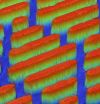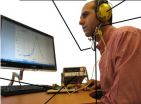(Press-News.org) The risk of severe maternal morbidity amongst women in Australia is increased by lower socioeconomic position, suggests a new study published today (17 September) in BJOG: An International Journal of Obstetrics and Gynaecology.
Australians generally enjoy high standards of living; however, existing research has concluded that health disparities exist, in particular between indigenous and non indigenous Australians.
This case-control study aimed to explore the independent impact of socioeconomic position on severe maternal morbidities associated with direct maternal death (amniotic fluid embolism, placenta accreta, peripartum hysterectomy, eclampsia or pulmonary embolism) amongst women in Australia. Data were collected through the Australasian Maternity Outcomes Surveillance System. In total, there were 620 cases and 820 controls used.
Results show that socioeconomic status was directly associated with maternal morbidity, with women with severe maternal morbidity being twice as likely to come from the lowest socioeconomic group compared with women who did not have maternal morbidity.
Maternal age was also significantly associated with maternal morbidity, with women aged between 30 and 34 being 1.4 times more likely and women aged 35 and over being 2.3 times more likely to suffer from maternal morbidity.
Furthermore, having given birth previously was found to be protective against maternal morbidity, whereas women who had reported previous pregnancy complications were 1.3 times more likely to experience severe maternal morbidity.
The number of previous caesarean deliveries was also significantly associated with maternal morbidity, with one caesarean delivery having double the risk of morbidity and two caesarean deliveries having four times the risk of severe maternal morbidity compared to women with no previous caesarean delivery.
Additionally, women who were Aboriginal or Torres Strait Islanders were 1.46 times more likely to suffer severe maternal morbidity. However, much of this increased risk is mitigated after adjustment for socioeconomic position, suggesting that socioeconomic factors may play a part in observed inequalities in pregnancy outcomes between indigenous and non-indigenous Australian women.
The authors of the study conclude that the risk of severe maternal morbidity amongst women in Australia is significantly increased by social disadvantage and future efforts in improving maternity care provision and maternal outcomes in Australia should include socioeconomic position as an independent risk factor for adverse outcome.
Professor Marian Knight, from the National Epidemiology Unit at the University of Oxford and co-author of the study, said:
"Despite universal healthcare in Australia, free at the point of access, socially marginalised women experience poorer maternal health outcomes, in terms of specific severe maternal morbidities, than those from higher socioeconomic groups. This has wide-ranging implications for health policy and the provision of maternity services.
"Identifying high-risk women is critical for the prevention of adverse outcomes as it allows targeted interventions and intensive clinical management of specific groups. Future planning to improve maternity service provision must focus on socially disadvantaged women in order to improve maternal health outcomes.
John Thorp, BJOG Deputy Editor-in-chief said:
"The results of this study provide further evidence to highlight the link between maternal morbidity and other risk factors such as advanced maternal age and previous caesarean delivery. This is the first nationwide study in Australia to investigate the risk of severe maternal morbidity amongst women from different socioeconomic groups.
"Further studies are needed in countries with less accessible healthcare systems to investigate the impact of socioeconomic position and potential factors to improve it. Additionally, further investigation of the outcomes of maternity care amongst different ethnic groups may help to identify actions to reduce other inequalities which have been identified in the UK."
INFORMATION: END
New study examines the impact of socioeconomic position & maternal morbidity in Australia
2014-09-17
ELSE PRESS RELEASES FROM THIS DATE:
A greater focus on socially disadvantaged women is needed to improve maternity care in England
2014-09-17
Women from lower socioeconomic groups in the UK report a poorer experience of care during pregnancy and there needs to be a greater focus on their care, suggests a new study published today (17 September) in BJOG: An International Journal of Obstetrics and Gynaecology (BJOG).
Differences in health outcomes amongst different socioeconomic groups have been demonstrated in many areas and have provided the focus for national initiatives in the UK to reduce the observed inequalities.
The Oxford University study, funded by the National Institute for Health Research, explores ...
NAMS issues first comprehensive recommendations on care of women at menopause and beyond
2014-09-17
CLEVELAND, Ohio (September 17, 2014)—The North American Menopause Society (NAMS) has published its key, evidence-based recommendations for the comprehensive care of midlife women—on everything from hot flashes to heart disease. The special feature, "The North American Menopause Society Recommendations for Clinical Care of Midlife Women," was published online today in the Society's journal Menopause. This is the first, comprehensive set of evidence-based recommendations for the care of midlife women freely available to all clinicians who care for women at this stage of life. ...
Sharks' skin has teeth in the fight against hospital superbugs
2014-09-17
Transmission of bacterial infections, including MRSA and MSSA could be curbed by coating hospital surfaces with microscopic bumps that mimic the scaly surface of shark skin, according to research published in the open access journal Antimicrobial Resistance and Infection Control.
The study modelled how well different materials prevented the spread of human disease bacteria through touching, sneezes or spillages. The micropattern, named Sharklet™, is an arrangement of ridges formulated to resemble shark skin. The study showed that Sharklet harboured 94% less MRSA bacteria ...
Violent origins of disc galaxies probed by ALMA
2014-09-17
An international research group led by Junko Ueda, a Japan Society for the Promotion of Science postdoctoral fellow, has made surprising observations that most galaxy collisions in the nearby Universe — within 40 million light-years from Earth — result in so-called disc galaxies. Disc galaxies — including spiral galaxies like the Milky Way and lenticular galaxies — are defined by pancake-shaped regions of dust and gas, and are distinct from the category of elliptical galaxies.
It has, for some time, been widely accepted that merging disc galaxies would eventually form ...
Global shift away from cars saves US$100 trillion, eliminates 1,700 MT of CO2 pollution
2014-09-17
NEW YORK (17 September, 2014)—More than $100 trillion in cumulative public and private spending, and 1,700 megatons of annual carbon dioxide (CO2)—a 40 percent reduction of urban passenger transport emissions—could be eliminated by 2050 if the world expands public transportation, walking and cycling in cities, according to a new report released by the University of California, Davis, and the Institute for Transportation and Development Policy (ITDP).
Further, an estimated 1.4 million early deaths could be avoided annually by 2050 if governments require the strongest ...
'Smart material' chin strap harvests energy from chewing
2014-09-17
A chin strap that can harvest energy from jaw movements has been created by a group of researchers in Canada.
It is hoped that the device can generate electricity from eating, chewing and talking, and power a number of small-scale implantable or wearable electronic devices, such as hearing aids, cochlear implants, electronic hearing protectors and communication devices.
The first results of the device's performance have been published today, 17 September, in IOP Publishing's journal Smart Materials and Structures.
Jaw movements have proved to be one of the most promising ...
World Alzheimer Report 2014 reveals persuasive evidence for dementia risk reduction
2014-09-17
The World Alzheimer Report 2014 'Dementia and Risk Reduction: An analysis of protective and modifiable factors', released today, calls for dementia to be integrated into both global and national public health programmes alongside other major non communicable diseases (NCDs).
Alzheimer's Disease International (ADI) commissioned a team of researchers, led by Professor Martin Prince from King's College London, to produce the report. ADI is publishing this report, in conjunction with World Alzheimer's Day™ (21 September) and as a part of World Alzheimer's Month, an international ...
Diabetes complications make patients more likely to fall down stairs
2014-09-17
New research presented at this year's annual meeting of the European Association for the Study of Diabetes (EASD) in Vienna, Austria, shows that people suffering from diabetic peripheral neuropathy (DPN)—a complication of diabetes that affects the nerves in the limbs—are likely to sway more during stair climbing, and thus are more likely to fall. Steven Brown, Manchester Metropolitan University, UK, is the lead author on this research, which has been conducted by researchers at Manchester Metropolitan University and the University of Manchester, UK.
Patients with DPN ...
Study shows users of insulin pumps are at 29 percent lower risk of death compared with patients on insulin injections
2014-09-17
A study of more than 18,000 patients with type 1 diabetes has shown that use of insulin pumps to administer insulin rather than treatment with multiple daily insulin injections results in a 29% reduction in all-cause mortality and 43% reduction in the risk of fatal cardiovascular disease (CVD, i.e. coronary heart disease or stroke). The study is presented at the annual meeting of the European Association for the Study of Diabetes in Vienna, Austria, and was prepared by Dr Soffia Gudbjörnsdottir, University of Gothenburg, Sweden and colleagues.
Insulin pump treatment (CSII ...
The Lancet: Scientists use modern forensic techniques to identify most likely cause of King Richard III's death
2014-09-17
New research led by the University of Leicester in the UK gives a blow-by-blow account of the injuries inflicted on King Richard III's body at the Battle of Bosworth Field on Aug 22, 1485. Modern forensic analysis of the King's skeletal remains reveals that three of his injuries had the potential to cause death quickly—two to the skull (page 4, figure 4) and one to the pelvis (page 5, figure 6).
The remains of King Richard III—the last English monarch to die in battle—were found under a car park in Leicester by archaeologists from the University of Leicester, and subsequently ...


